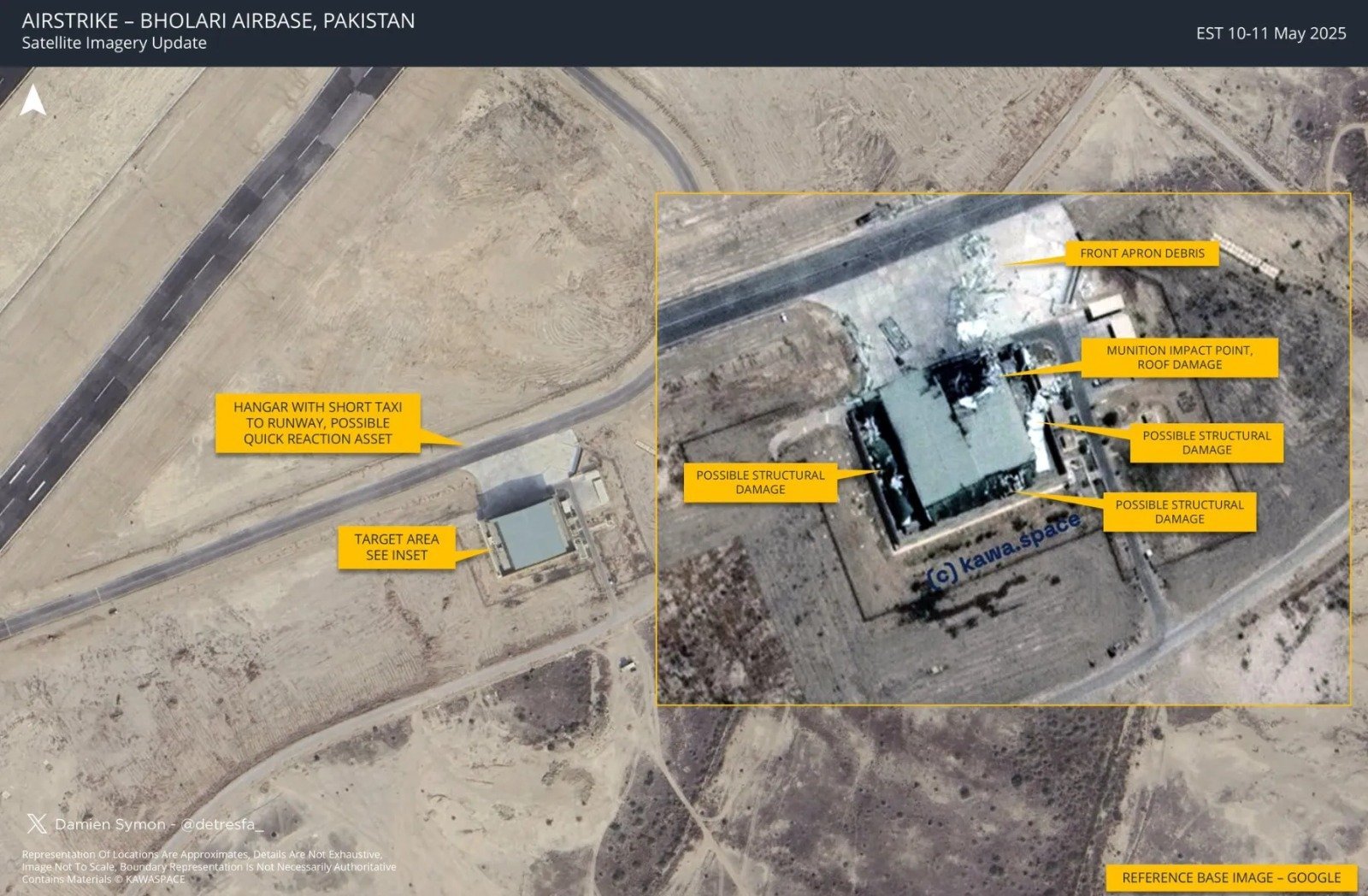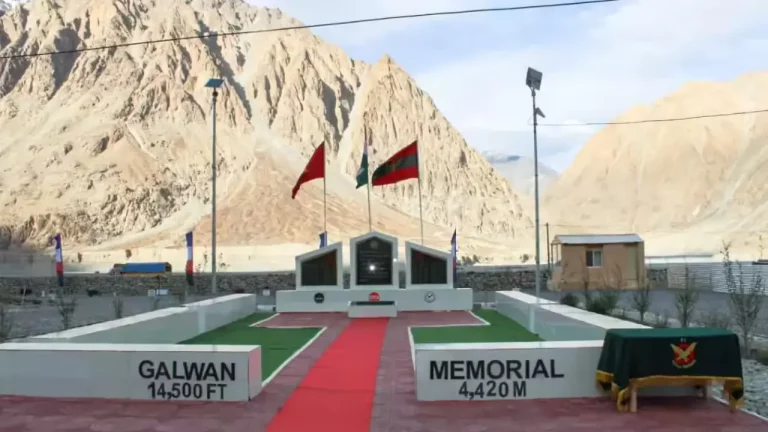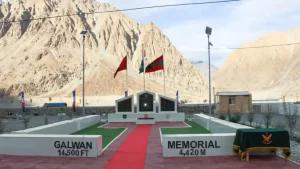In a significant military operation, the Indian Air Force (IAF) has targeted multiple airbases across Pakistan in a coordinated response to the deadly terrorist attack in Pahalgam, Jammu and Kashmir, which resulted in the deaths of 26 civilians on April 22. The operation, named Operation Sindoor, aimed to diminish Pakistan’s offensive air and drone capabilities by attacking crucial military infrastructure.
Recent satellite imagery from both Indian and international sources confirms extensive damage to key assets at the targeted locations. At the Bholari Airbase near Hyderabad in Sindh, satellite images from KawaSpace dated May 10 show a heavily damaged hangar close to the runway, which was likely used for rapid deployment operations. Reports suggest that a SAAB 2000 Erieye AWACS aircraft, which was under maintenance at the time, was destroyed, resulting in an estimated loss of Squadron Leader Usman Yousaf and over 40 personnel. Additionally, four drones were reported damaged, representing a notable blow to Pakistan’s surveillance and rapid response capabilities.
At the Nur Khan Airbase in Rawalpindi, recognized as a strategic transport hub for the Pakistan Air Force, satellite imagery from the Chinese company MizarVision reveals damage to fuel trucks and training facilities. Although reports indicate that key aircraft, including the C-130 Hercules and IL-78 refuelers, were not affected, the precision of the strikes points to a calculated effort to disrupt logistical operations without provoking a full military escalation.
The Jacobabad Airbase, known for its drone operations, also came under missile strikes targeting unmanned aerial vehicle maintenance and command infrastructure. Indian officials linked this operation to recent Pakistani drone activity, which had seen the launch of 300 to 400 drones, including advanced Turkish-made Songar models. Indian defense systems successfully intercepted many of these drones.
Sargodha Airbase in Punjab, home to squadrons from Pakistan’s Central Air Command, was reportedly targeted as well. Although independent imaging has been limited, defense sources indicated damage to runways and aircraft shelters, potentially impairing Pakistan’s ability to swiftly deploy fighter jets like the F-16 in response to emerging threats.
These coordinated strikes were a part of a wider Indian military campaign activated in the wake of the devastating Pahalgam terror attack, which India has attributed to militants based in Pakistan, specifically affiliated with groups like Lashkar-e-Taiba and the Resistance Front. On May 7, prior strikes were launched on several airbases, including Chaklala, Rafiqui, Murid, and Rahim Yar Khan. The Indian government has emphasized that these actions were “focused and non-escalatory,” aiming to dismantle terror-related military infrastructure while working to minimize civilian casualties.
In response, Pakistan described the strikes as acts of war, claiming over two dozen civilian fatalities and numerous injuries. However, India has reported that all targets were strictly military, with efforts made to avoid civilian areas. Satellite imagery supports India’s claims, showing that the damage was contained and strategic.
A tentative ceasefire was negotiated through military hotlines on May 10, following several days marked by missile exchanges and drone interceptions. Despite the ceasefire, reports of subsequent explosions in Srinagar and Jammu suggest that low-level tensions persist.
International responses to the situation have varied. The United States, having earlier stated that the conflict was a bilateral matter, has since urged India to refrain from further military actions. India is preparing to present evidence of Pakistan’s alleged connections to terrorism at the upcoming UN Security Council meeting. Meanwhile, China has acknowledged the damage incurred at the Nur Khan base through satellite data but has maintained a diplomatically neutral stance.
The Indian focus on dismantling air assets and drone infrastructure marks a significant shift in strategy, steering towards precise, punitive measures against perceived cross-border threats.















